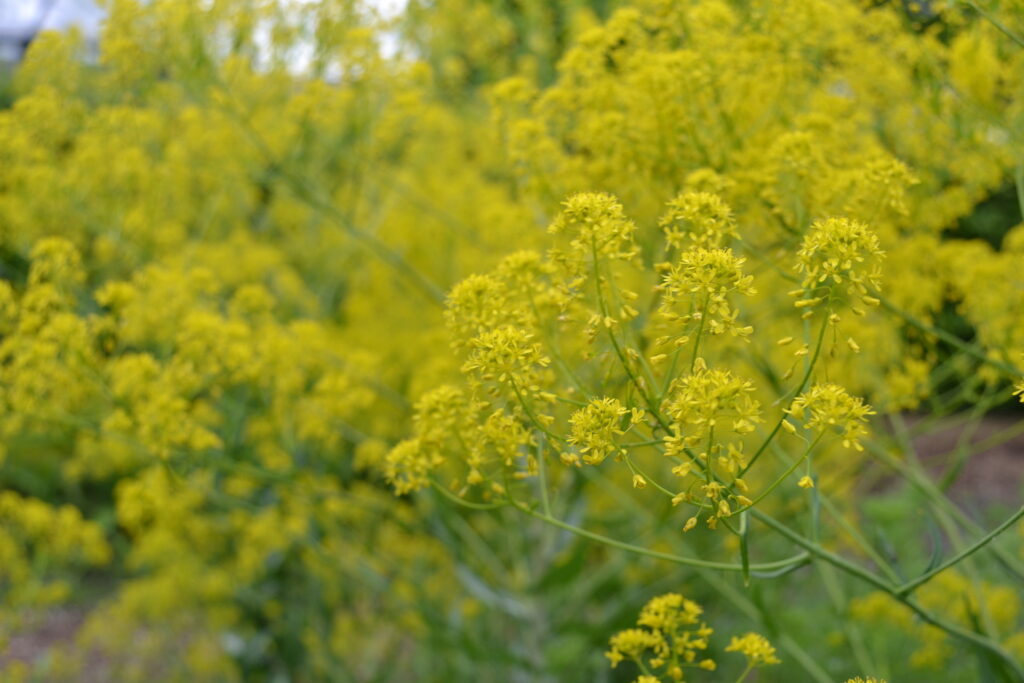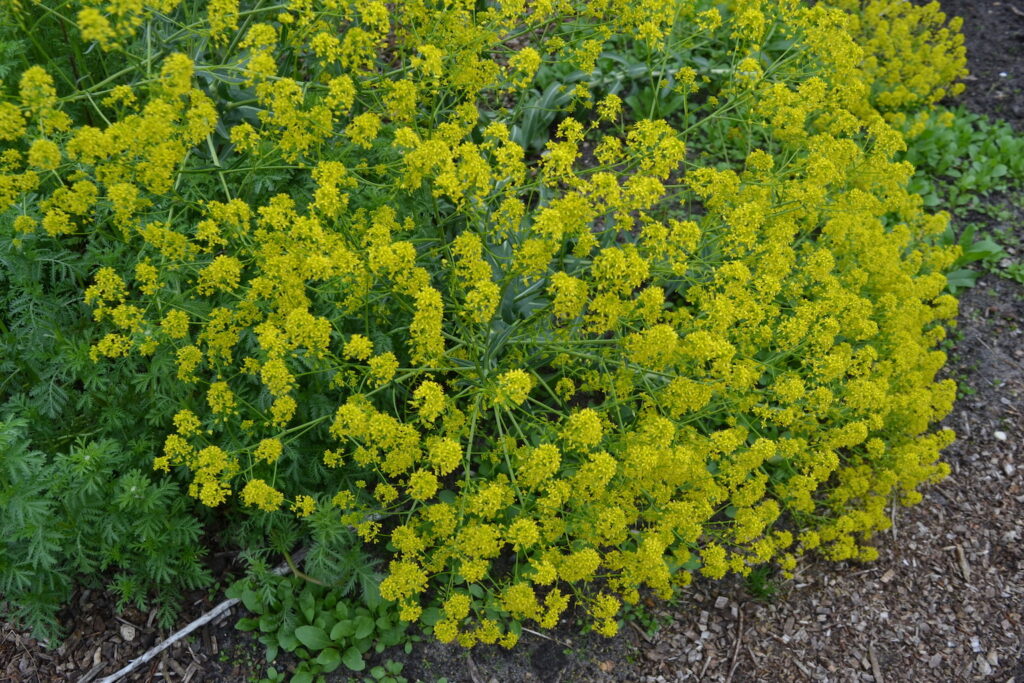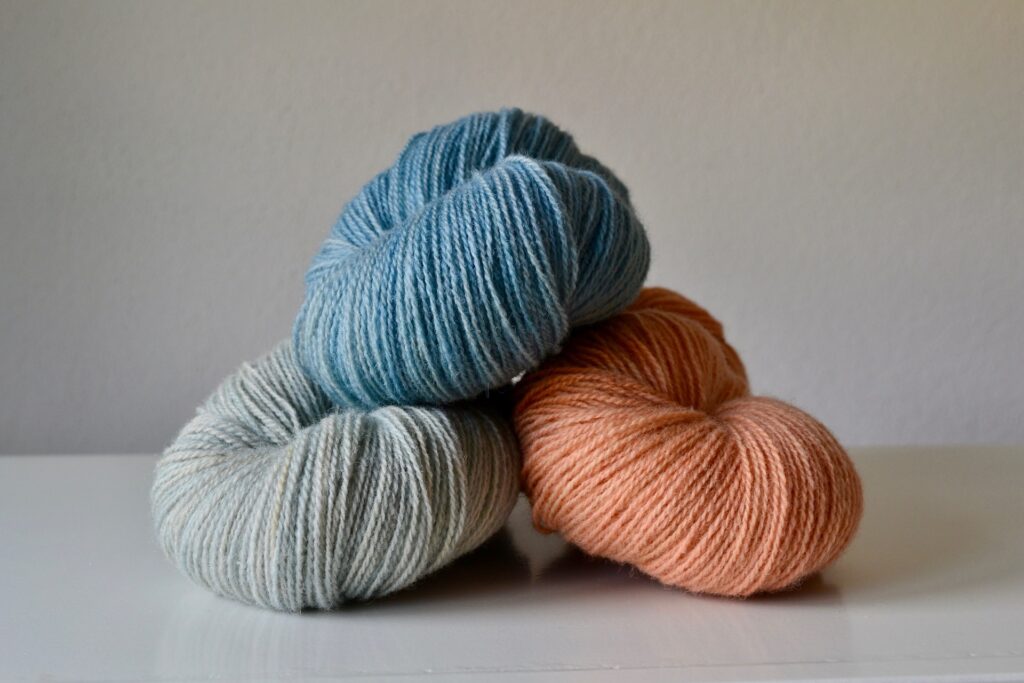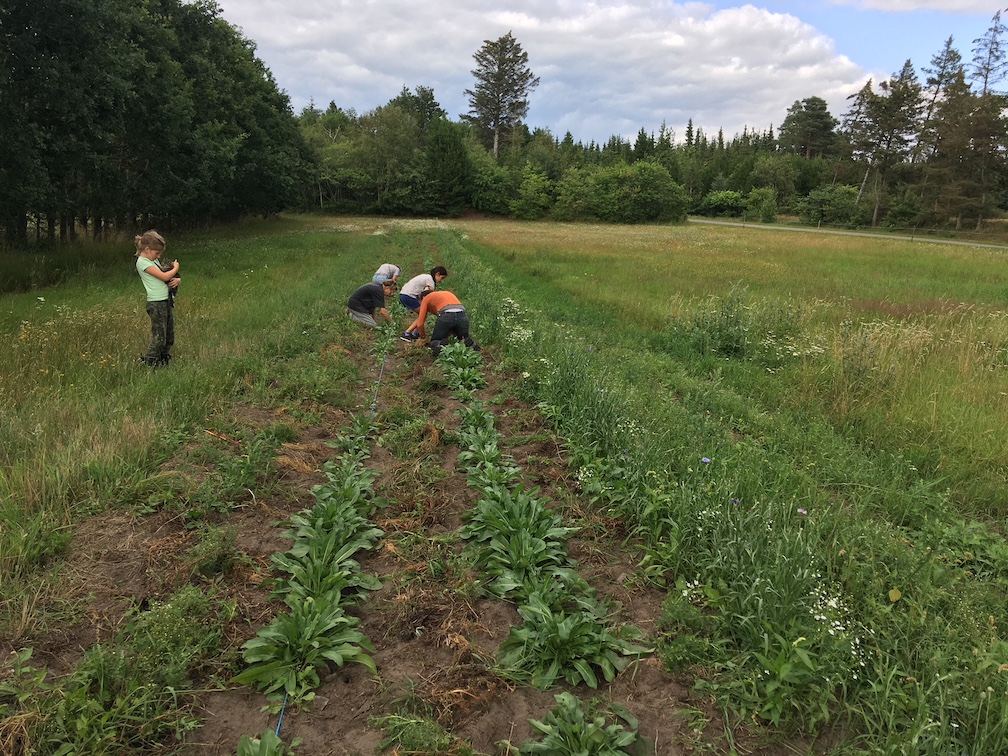There is a handful of dye plants that should be found in any dye garden. Woad is one of those, in my opinion.
Woad is one of the very old cultivated dye plants – in Denmark, it has been cultivated since more than 2000 years ago. So although the plant gives rise to much less indigo than Japanese indigo, the plant still makes sense from cultural history perspective.
I’ve been growing woad in my dye garden for a few years now, and this post is just a kind of news bulletin on the woad progress.
The second year woad plant cannot be used for dyeing, so it should only be left to take seeds. Although it is also just an elegant plant to look at! When flowering:


…and when the seeds ripen:

This year, I had used way too many seeds for sowing (they were a bit old, so I didn’t know how viable they were – very, it turned out). Heavy handed sowing is not recommended! Ripping out the extra plants is hard work, since they have a very deep root. And the plants obviously can’t grow well when crowded.
I used the weeded out plants for dyeing, using the method for fresh leaves (same as here). The dye process is as follows:
- Pour just boiled water over the fresh leaves so it covers. I had 8-10 liters.
- Let it steep for an hour
- Strain out the leaves (and save them to make a red dye)
- Add base to pH 10 (I used sodium carbonate, a couple of Tsp)
- Pour the liquid back and forth between two containers to oxidize
- Add reducing agent (sodium dithionite, 1 Tsp) and let the vat rest until the color has changed. It should be on gentle heat to keep the temperature around 50C
- Use this vat to dye in as usual with an indigo vat.
The leaves from 3. can be boiled in a new shift of water to extract a red dye for use on alum mordanted wool. The red color obtained is not very light fast, though.
I did a couple of rounds of woad dyeing using my weeded out plants in early July, and the first round gave this (nice) result:

The second round didn’t work. The mosquitoes and I started weeding in the evening, since we had several hot days, too hot to work in the sun! Yes, it happens in Denmark from time to time.
By the time I was ready to dye with the leaves, it was too late at night, so instead of leaving step 2 for an hour, I left it overnight – although I had a feeling it wouldn’t work. It didn’t.
The reason – of course – is to be found in the chemistry of indigo precursors. The leaves of indigo-producing plants do not contain indigo itself, but compound that can react to form indigo, called precursors.
Japanese indigo and tropical indigo both contain indican, which is also found in woad but in small amounts. The main precursor in woad is isatan B, and this compound is not stable in a neutral solution or at high temperatures. Here, “not stable” means that the compound is broken down and no indigo is formed.
I actually knew that, from this paper describing extraction of indigo from woad leaves. They extract isatan B overnight at moderate temperature: first 60C to break the waxy layer on the leaves, then ambient temperature. The pH is kept low (3.5) in this step to prevent loss of isatan B.
I’m re-reading the paper because I am planning to scale up woad indigo extraction relative to last year (a few grams!). This year, we are growing a larger experimental plot in the Western part of Denmark, and I will try extraction with part of these plants:

